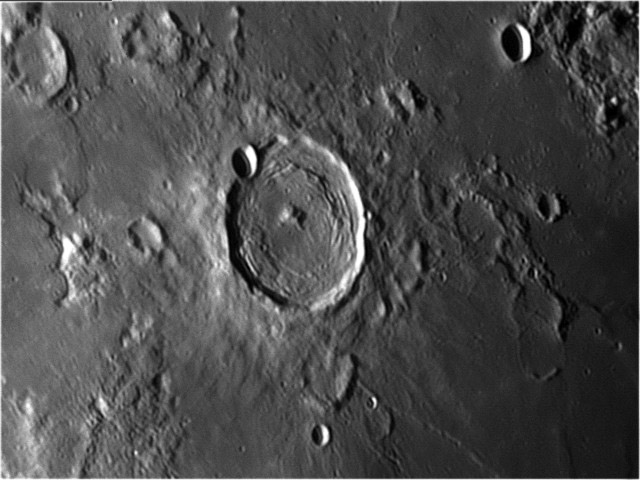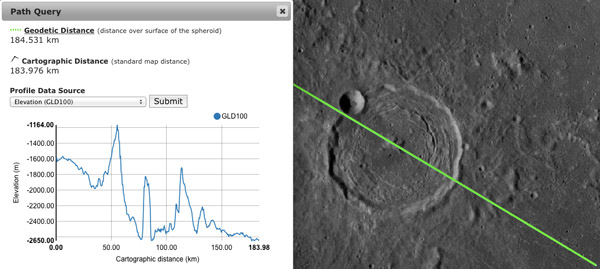November 3, 2014
True?
 image by Rafael Benavides, Cordoba, Spain image by Rafael Benavides, Cordoba, Spain image from LRO QuickMap |
Taruntius is famous in modern times as a floor-fractured crater with rays. Since rays erode away with time, about a billion years or so, the implication was that the volcanism that lifted the floor of Taruntius and made the small dark halo crater happened over the last billion years, and thus was quite young. But since then it has been found that some rays have chemical compositions that resist disappearing and might last two or more billion years, and thus Taruntius' magmatism is not uncomfortably young. But if you look at the LRO high Sun image and especially the Clementine color ratio image you will see that there is little evidence for rays. So maybe the problem of age and rays is not a problem. Another common statement about Taruntius is that because of the uplifted floor the central peak is higher than the rim. Making transects with the LRO QuickMap shows that the peak is about the same elevation as the eastern rim, but is lower than the rim everywhere else, especially on the north, northwest. But look at the elevation of the terrain Taruntius is built on; it slopes down about 1000 m from north west to the east. So the northwest rim is much higher than the peak and the eastern rim. But if you correct by subtracting the slope, than the northwest peak is about the height of the east rim, and the central peak, which has to be corrected as well, is about 300 m lower than any part of the rim. So two long held thoughts about Taruntius seem not to be true. We know this because of LRO data.
|
Yesterday's LPOD: Upside Down
Tomorrow's LPOD: Time is All There Is
COMMENTS?
Register, Log in, and join in the comments.



